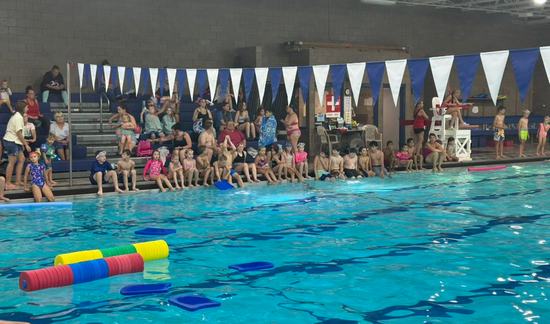The Crookston School District bus garage committee met Wednesday night at the Crookston High School. The meeting served as an update from the questions the committee had posed to Superintendent Jeremy Olson during their meeting on December 13.
One of the primary concerns in that meeting was the cost of a new fuel system, costs to take the current system out and whether the current system passes inspection. A fuel tank needs to be replaced when it is scored at an 850 on the fitness and leak test. Currently, the gasoline tank scores 1,000, while the diesel tank scores an 875, meaning it is getting very close to the end of its usable life. The current fuel system including both tanks was installed in 1991. Olson and Rick Niemala, Crookston School District Transportation Coordinator, received an estimate for removal of the old system and installation of a new system. “We did a lot of research, and actually Rick did a majority of that, looking at the cost to replace the tanks,” said Olson. “If we went with above ground tanks and a new system, we are looking at roughly $130,000 as an estimate. That would be publicly bid, so we’re not sure how the numbers would fall but that is the estimate we’ll use for now.”
Another important question raised was whether the district would be better off contracting out to a vendor for bus transportation. Olson compiled the three-year average cost of to Crookston Public Schools for operating their own buses at $598,341.33. Dietrich & Sons Inc. provided an estimated contracting cost at $722,988.33 a year based on standard routes, which comes out to a 20.83 percent increase in annual cost. The estimate doesn’t consider that Crookston operates a few routes that are not considered standard, including one that is 70 miles round trip twice a day, which would likely increase a bid if the service was bid out. Olson also did some research into southern school districts, where contracted bus services are more prevalent and found that carriers there charge about 33 percent more than Crookston’s current bus cost. “We wanted to explore about the total cost and asked Dietrich’s about some of the numbers and put that into our spreadsheets and how that would affect us,” said Olson. “What we came for was about a 20 percent increase in cost operationally. We also looked at some numbers from the cities and southern Minnesota transportation where it used a little then in northern Minnesota. Either way to contract out our buses would result in a net increase in cost for the district.”
School Board Member Dave Davidson asked what the amortization would be between the increased cost of transportation versus the cost of a new bus garage. Without the cost of a bus garage on the table, Olson could only provide the best guess on a timeframe. “Obviously we don’t have a cost for a building so it’s hard to say what the exact number is,” said Olson. “I think a round number would be 10-15 years to amortize that over time. Absent the actual cost of the bus garage because we’re so early in this work I just couldn’t say for sure.”
The need for an architect was also a hot topic during the last referendum and meeting as was the building code. Olson reached out to the City of Crookston Building Official Matt Johnson about those topics and his answers are attached below. One of the key components to why an architect is needed is that the building must meet Minnesota State Building Code and can’t be built to the Agricultural Code even if outside of town because its primary use is not for agriculture. “There was a question that came up in the community if we built a bus garage outside of city limits would we be able to build it for cheaper and the answer is no,” said Olson. “Minnesota has adopted building codes not only for the city but outside city limits. There is an agricultural exemption only if using the building for agricultural purposes. Because we are using this for a bus garage we would not fall into that exemption.”
Both Johnson and the districts attorney’s have advised against having a third party build the garage and the school entering a lease or buyback contract as the building would still have to meet the same codes. No alternative sites have been identified as the cost to purchase land would increase the project’s cost. School officials like the Plymovent ® air handling system utilized by the Crookston Fire Department, but are as yet unsure if that will meet with state code. An estimated cost for that system is between $7,000-8,000 per bus. Crookston has 18 buses in their fleet.
On Monday the Crookston School Board approved an RFP for an architect for the project and are currently planning to interview architects on February 25. School Board Member Frank Fee told the committee, “if this committee comes up with another $3 million bus garage, we aren’t doing our job as the community has expressed pretty clearly that is unacceptable.” He also said that the project needs an architect that can be a spokesperson for the facility and be available for questions, especially specifics at community meetings. Chris Wahlin is also going to work on organizing some tours of local school bus garages for the committee.

[embeddoc url=”https://kroxam.com/wp-content/uploads/2019/01/Scanned_from_a_Lexmark_Multifunction_Product01-30-2019-190326.pdf” download=”all”]
Tags:



